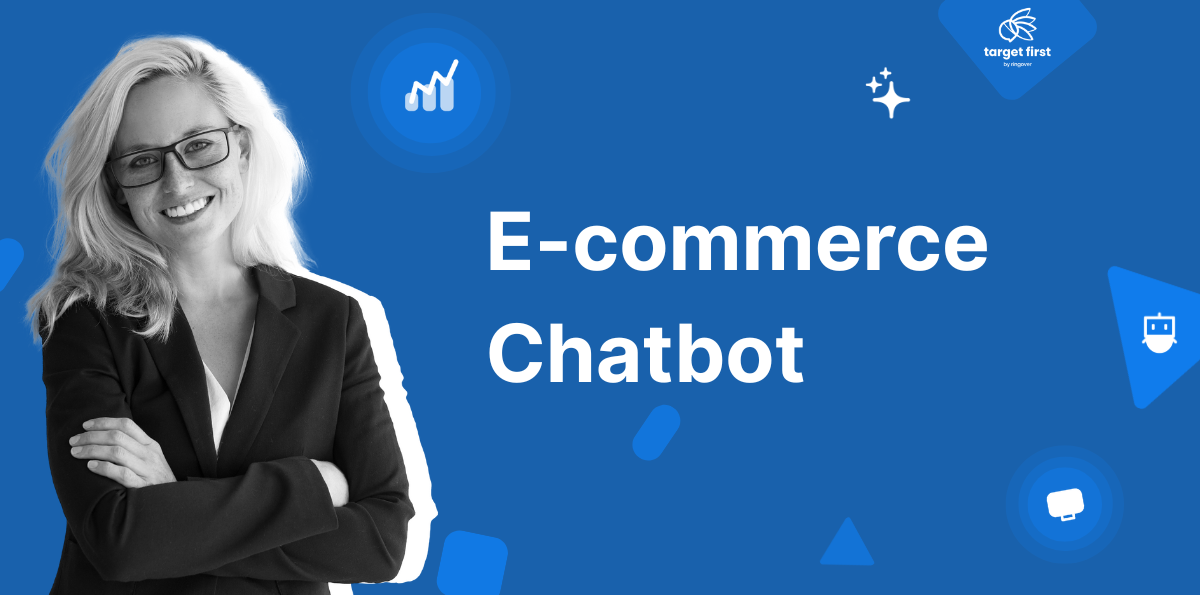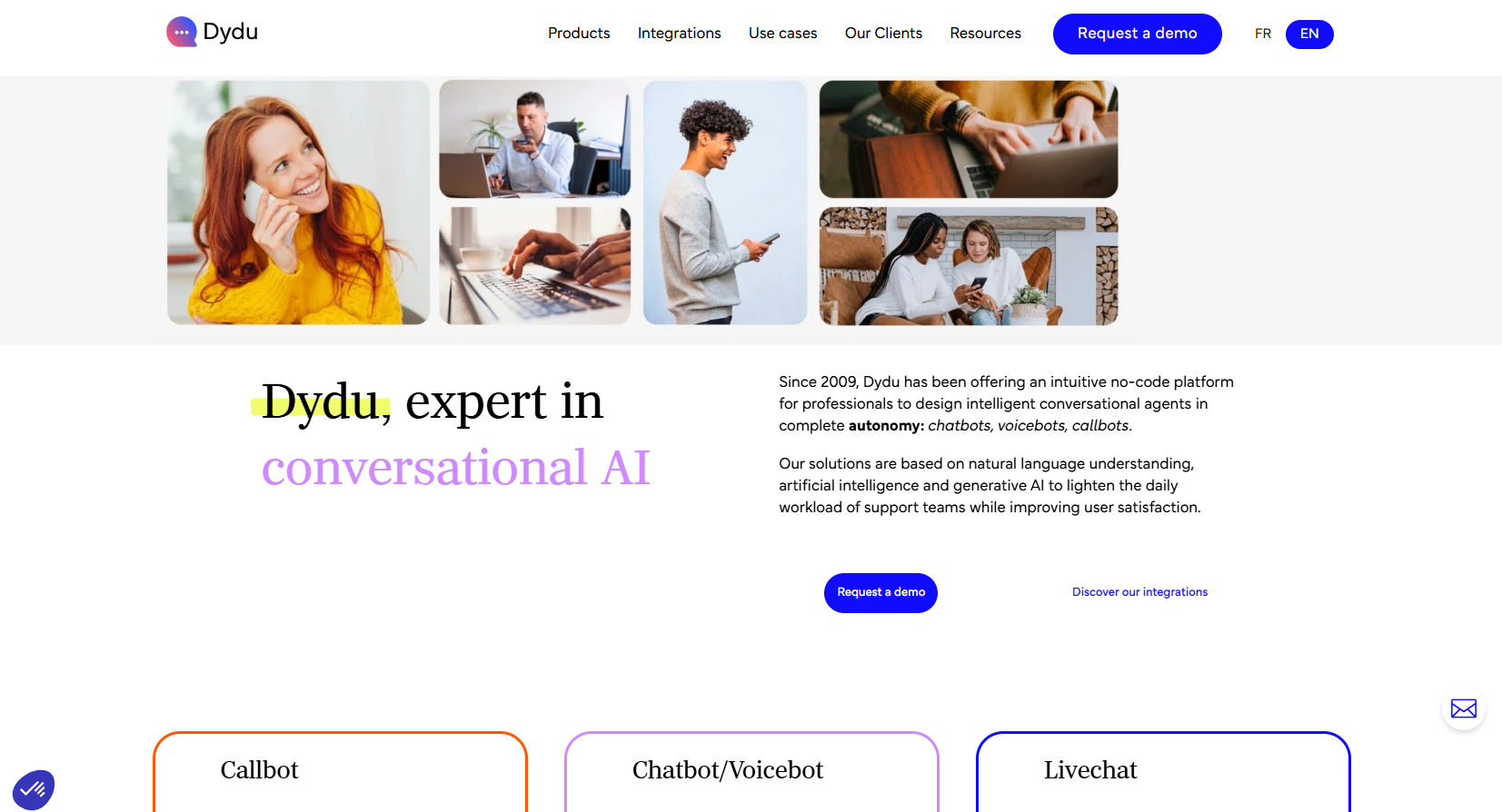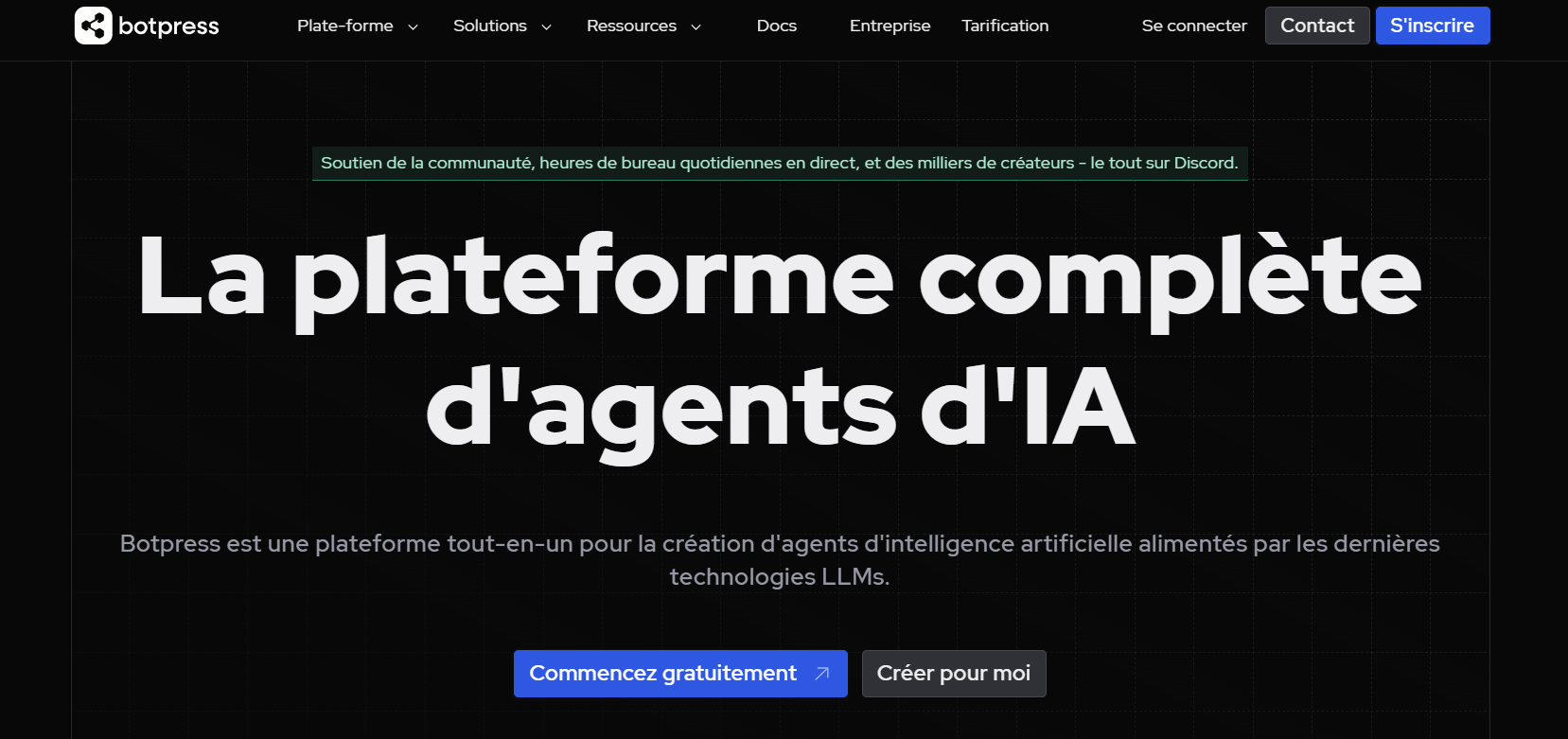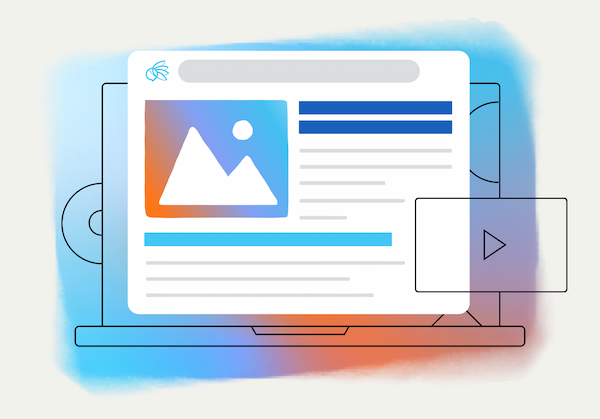What Is an e-Commerce Chatbot? How It Boosts Sales and Improves Customer Support
In the fast-paced world of e-commerce, delivering an outstanding customer experience is essential for driving sales and fostering loyalty. One powerful tool for achieving this is the e-commerce chatbot.
Contact Us
An e-commerce chatbot transforms the online customer experience: available 24/7, it guides, reassures, and automates interactions. Discover how this conversational tool can boost your sales and ease the workload of your sales teams—without complicating the purchasing journey.
When it comes to sales, every interaction matters. It is no longer just the quality of the products that shapes the perception of a brand, but also (and perhaps especially) the way it supports its visitors at every stage of their journey. This is the logic behind conversational chatbots—interfaces that redefine the contours of customer relationships.
In recent years, these digital agents have experienced a significant rise. Driven by the growth of artificial intelligence, they have become more refined and efficient, establishing themselves as true accelerators of commercial performance. Yes, you can increase your sales with an e-commerce chatbot.
How? That's what we'll explore in the next few lines. But first, let's look at some insights and interesting statistics about chatbots and e-commerce.
Key figures and highlights on e-commerce chatbots
- More than 60% of consumers say they are ready to use AI to improve their experience (FEVAD Study 2024).
- According to a survey conducted by Statista in early 2024 in the United States, 31.4% of professionals surveyed say they already use chatbots or virtual assistants dedicated to supporting buyers. This figure reflects a shift in usage, but above all, it marks a change in mindset: conversational automation is no longer seen as just a technical support tool, but as a natural extension of the sales relationship.
- According to Grand View Research, the chatbot market could reach $27.29 billion by 2030, with an annual growth rate of over 23% between 2025 and 2030.
- According to a KPMG report, companies remain cautious about regulatory uncertainties related to generative AI, but this does not hinder their investments. 77% of respondents acknowledge that the regulatory environment, still unclear and constantly evolving, influences their investment decisions. However, the majority say they are confident in their ability to adapt and meet future requirements.
What is an e-commerce chatbot?
An e-commerce chatbot is a computer program capable of interacting with customers or prospects via digital channels, such as:
- websites,
- social networks,
- messaging apps, etc.
These are conversational agents, combining various technologies (increasingly AI-based) that allow them to mimic human conversations.
What we're seeing more and more in the e-commerce sector is that these chatbots no longer just react. In fact, they are gradually becoming part of the company's overall sales strategy.
Overview of the main types of chatbots
Not all chatbots are created equal, and their capabilities vary depending on the approach taken.
Some operate in a very structured way, based on menus or buttons. Here, the user selects from the options offered—similar to interacting with a vending machine. This system has the advantage of clarity but quickly shows its limitations when the customer's request falls outside the predefined scope.
At the other end of the spectrum, you'll find much more sophisticated chatbots, built around rules, scripts, and now enhanced with a layer of AI. Their operation relies on a fine analysis of user requests, interaction history, and other key data. As a result, they can offer much more contextualized responses.
What really sets them apart from simple chatbots is their ability to adapt and not just offer fixed options. These intelligent chatbots or virtual assistants are therefore more flexible and more relevant for e-commerce.
The main features of e-commerce chatbots
The most advanced e-commerce chatbots today are capable of performing a wide range of tasks and can be integrated into every stage of the customer journey.
Their scope of action is very broad and goes beyond just answering frequently asked questions. Generally, they can:
- Help customers by guiding them to the right product
- Handle order placement
- Simplify payment processes
- Assist with delivery tracking
What are the advantages of an e-commerce chatbot?
Let's explore the tangible benefits digital agents offer to e-commerce professionals and their customers.
3 Key Benefits of a Chatbot for e-commerce Professionals
For many players in the industry, chatbots are a fully-fledged operational lever, offering benefits on multiple levels:
1. Boosting Conversion Rates
On an e-commerce site, hesitation can be fatal. Behind every product that's viewed but not purchased, there's often an unanswered question or an unresolved concern. This is precisely where the chatbot comes in. It helps clear up doubts and guide customers toward making a purchase. When properly configured, it goes beyond simply informing and becomes a true conversion engine. In short, it reduces friction in the buying journey.
2. Increasing Average Order Value
Even if a customer easily finds what they're looking for, it's still important to show them what else they might want.
By taking into account a shopper's purchase history or preferences, the chatbot can suggest complementary products or targeted offers—without being pushy or overwhelming.
This kind of upselling, which is often difficult to implement without harming the user experience, becomes more natural here. The shopping assistant makes suggestions without imposing.
3. Reducing Cart Abandonment
As you know, cart abandonment remains one of the costliest issues for online stores. With a well-calibrated virtual assistant, you can address the root causes behind it.
These may include lack of information, no order tracking, or a complex checkout process. The chatbot can lower the abandonment rate by reminding users of ongoing promotions or by activating when a visitor is about to leave the page.
3 Benefits of an E-commerce Chatbot for End Customers
Customer expectations are constantly rising. It's therefore essential to provide a great customer experience. That's one of the challenges e-commerce chatbots can help you overcome if you run an online store. Here are three ways a chatbot can enhance your customers' experience:
1. Offering 24/7 Availability
A customer might need an answer at any time—late at night, on weekends, or even during holidays.
Always available, the chatbot ensures uninterrupted service, providing reassurance.
For common questions like “What are the shipping costs?”, “Is this product in stock?”, or “Is this product compatible with [x]?”, it can deliver instant answers—no waiting, no phone calls, no forms, no need to browse the FAQ.
This responsiveness helps build trust. Customers feel they can rely on a consistent, dependable presence—at any hour.
2. Making Product Discovery Easier
When faced with a large catalog or technical product range, it can be tedious to find the right item. A virtual assistant acts as a guide, helping customers find relevant products based on their needs—without digging through every category.
Like a helpful in-store associate, it can ask a few targeted questions to refine the search, suggest alternatives if an item is out of stock, or filter options using specific criteria. As a result, time spent on the site becomes more productive, smoother—and often, more enjoyable.
This subtle but effective support simplifies the purchasing process, which might otherwise have been abandoned midway.
3. Personalizing the Experience
As mentioned earlier, the lived experience and perceived quality now matter more than ever in the purchasing decision. A high-performing chatbot can tailor its responses based on the individual interacting with it. The experience becomes personalized.
The most advanced e-commerce chatbot solutions use conversation history to ensure the customer doesn't have to repeat themselves or start from scratch. Everything is designed to streamline and personalize the journey.
How to Personalize Your E-commerce Chatbot
If you're planning to deploy a chatbot on your website, you'll need to think about personalization. It's a must-have for building an effective e-commerce bot. Personalization depends on the quality and relevance of the data feeding into your chatbot. So how do you approach it?
1. Define the Role of Your E-commerce Chatbot
What is this chatbot really meant to do? That question is the foundation of your project. On an e-commerce site, there are many possible objectives:
- Relieving pressure on customer service
- Guiding visitors through a product catalog
- Recovering abandoned carts
- Scheduling appointments
- Qualifying leads, etc.
Focus on your main need before trying to solve everything at once. Then, align that need with a measurable KPI (e.g., reducing basic support requests, improving mobile conversion rates, etc.).
2. Choose a Platform That Matches Your Ambitions
Once the chatbot's purpose is clear, the next step is choosing the platform you'll use to build and customize your e-commerce chatbot.
There's no shortage of tools on the market, from accessible no-code solutions to more advanced platforms with generative AI capabilities. Your choice will largely depend on your internal resources, technical expertise, and desired level of customization.
For instance, if your project involves dynamic product recommendations or tracking purchase history, you'll need to ensure the platform supports those capabilities.
3. Design a Customer-Centric Conversation Flow
Creating a chatbot is more than just writing a few lines of dialogue. It involves building a coherent conversational architecture that can adapt to various user profiles and situations: new visitors, returning customers, delivery issues, out-of-stock products, and more. The scenarios are endless!
Typically, this involves several key steps:
- Define core intents (e.g., “I'm looking for a product,” “I want to track my order,” “I have a payment issue”)
- Map out realistic conversation branches
- Train the chatbot to understand different user phrasings
- Most importantly, use dynamic variables (name, order info, preferences) to anchor responses in the user's real-world experience
4. Test in Near-Real Conditions
Before going live, test your chatbot like you would any consumer product. Simulate purchases, include typos, and test responses to off-script questions.
The goal isn't perfection—it's identifying breaking points, awkward silences, or tonal inconsistencies.
It's not a big deal if your chatbot can't answer a specific question. However, it should be smart enough to escalate the request to a human agent or direct the customer to an FAQ, a product sheet, a contact form, or a dedicated web page.
5. Integrate the Chatbot into Your E-commerce Ecosystem
Your chatbot shouldn't just sit on top of your site or tech stack. It needs to be fully integrated into the user experience, your business tools, and your technical environment.
This includes:
- Integration and synchronization with your CRM and e-commerce tools
- Compatibility with your communication channels
- Alignment with your brand's design and tone of voice
Every chatbot interaction should feed into a usable customer profile, supporting future actions (follow-ups, recommendations, segmentation, etc.).
6. Track Usage and Continuously Improve the Chatbot
Once launched, your e-commerce chatbot becomes a living customer touchpoint. It learns, it sometimes makes mistakes, and often, it reveals previously unknown customer needs.
So it's crucial to monitor:
- Escalations to agents or other channels
- Conversions assisted by the chatbot
- Drop-offs or signs of user frustration
- Feedback from customer service teams or collected verbatim
These insights will guide future iterations: adjusting scripts, adding new intents, segmenting users, and more.
How to Increase Sales with an E-commerce Chatbot
Boosting sales with an e-commerce chatbot requires a well-thought-out strategy. Here are some practical tips to help you maximize your chatbot's impact on your sales.
1. Reassure Customers from the First Interaction
On a product page, even the smallest unclear detail can cause hesitation. Delivery times, return policies, technical compatibility—these are all common points of friction that a chatbot can help resolve instantly. Of course, this requires a finely tuned setup and a strong, regularly updated knowledge base.
2. Guide Without Pushing
The way people navigate an e-commerce site is rarely linear. If conversion were that simple, everyone would be doing it. Some visitors browse casually, others compare, and a few know exactly what they want. A chatbot becomes especially useful when it adapts to this variety—without jumping in too soon or fading out too quickly. It's all about balance.
By taking into account visited pages, time spent on site, or the device being used, the chatbot can engage tactfully. A subtle suggestion when a product is out of stock, a promo code on a third visit, or a cart reminder after an unexpected return—these small, well-timed interactions can directly influence conversion without feeling intrusive.
3. Increase Average Order Value
A customer engaging with a chatbot is usually showing intent. That's the perfect time to suggest additional products—not with a hard-sell approach, but as thoughtful recommendations.
What makes a chatbot valuable is its ability to detect cross-sell or upsell opportunities while respecting the customer's pace. Advanced algorithms even adapt these suggestions in real time based on overall shopping behavior or personal history.
4. Smooth the Customer Journey and Enhance the Overall Experience
Customer experience is often what separates two websites selling the same product. A chatbot's 24/7 availability, ability to deliver clear and helpful answers, and guidance through complex catalogs all contribute to a smoother user experience. Not as a human replacement, but as a reliable, ever-present assistant—supportive, never overwhelming. And as we all know: a customer who feels heard and understood is more likely to stay, return, and even advocate for your brand.
5. Segment Traffic and Improve Targeting
Every interaction with your e-commerce chatbot yields useful signals—preferences, doubts, purchase intent. By collecting and analyzing this data, you gain a clearer view of your audience, uncover hidden niches, and fine-tune marketing campaigns.
This data-driven approach makes your advertising more relevant and less intrusive. The goal isn't to push just any product—it's to suggest the right one, at the right time.
In fact, when it comes to ROI, there's often a big difference between a generic broadcast and a campaign finely tuned to real-world conversational data.
The Best Chatbot Solutions for E-commerce
Thinking of launching your own chatbot? Here are three standout solutions that offer a high degree of customization.
1. Target First – The Conversational Solution Built for E-commerce
While many platforms try to adapt to e-commerce, Target First is built around it: lead generation, cart recovery, customer qualification—everything is designed to serve clear commercial goals before, during, and after the sale.
Target First offers a user-friendly interface, a powerful conversation engine that blends pre-built flows with adaptive intelligence, and most importantly, a human-centered approach to customer relationships. It also features behavioral targeting tech that identifies cart abandoners in real time.
The dashboard gives you real-time insights into performance metrics like conversion rate, sales, satisfaction, engagement, and conversation trends—all at a glance.
Target First also stands out for its advanced customization. The bot can be trained directly on your own data (FAQs, customer history, knowledge base, etc.).
Crucially, it's designed to work alongside your sales and support teams—not in a silo. It can autonomously escalate requests to a human agent when needed, without friction.
2. Dydu

Like Target First, Dydu is a French solution—reassuring in terms of data governance. Dydu also supports escalation to a human advisor via live chat, ensuring a smooth handoff when necessary.
3. Botpress

Botpress is a modular drag-and-drop platform. It allows you to build conditional scenarios, though it's more suited to users with technical skills. Like Dydu and Target First, it lets you feed your bot with your own data to improve relevance and responsiveness.
Ready to Transform Your Customer Experience with an E-commerce Chatbot?
Customer experience has become one of the most important differentiators for today's ambitious online retailers. In an environment where customers are more fickle and demanding than ever, having a powerful chatbot is no longer optional—it's a strategic advantage.
An e-commerce chatbot not only reduces friction along the buying journey but also responds instantly to visitors' needs, 24/7.
Whether it's guiding customers to the right product, reducing cart abandonment, streamlining support, or automating repetitive tasks, the benefits are real—and measurable. And contrary to outdated perceptions, modern chatbots are no longer just rigid scripts. They integrate seamlessly into your e-commerce stack, continuously learn, and adapt to your business strategy.
Thinking of adding a smart chatbot to your online store but not sure where to start?
Target First's team is ready to help you deploy a powerful AI assistant tailored to your goals and your market.
👉 Contact us today!
E-commerce Chatbot FAQ
What is the Best AI for E-commerce?
The best AI for e-commerce is often a combination of various technologies and platforms. Here are some key aspects to consider:
- Natural Language Processing (NLP): Platforms like Rasa, which focus on open-source NLP engines, can be highly effective. Rasa allows developers to build and improve AI assistants using a story approach to training data.
- Machine Learning Algorithms: Target First uses advanced machine learning algorithms to provide personalized product recommendations and automate customer interactions, which can significantly enhance the shopping experience.
- Omnichannel Support: Target First also offers strong integration across multiple channels, including social media, websites, and messaging apps, ensuring a seamless customer experience.
How to Make an E-commerce Chatbot?
Creating an e-commerce chatbot involves several steps, whether you choose to build one from scratch or use a pre-existing platform.
Using a Pre-existing Platform
- Select a Platform: Choose a platform like Target First that aligns with your business needs. These platforms often offer user-friendly interfaces and visual editors to build conversation flows.
- Configure Integrations: Set up integrations with your e-commerce platform, social media channels, and other relevant systems to ensure the chatbot can access necessary data and perform tasks seamlessly.
- Train the Chatbot: Use historical data and customer interactions to train the chatbot. Platforms like Rasa require a large training dataset to optimize the NLP engine.
- Test and Deploy: Test the chatbot thoroughly to ensure it responds accurately and contextually. Once satisfied, deploy the chatbot across your chosen channels.
Building from Scratch
- Choose an NLP Engine: Select an NLP engine like Rasa or Wit.ai to handle natural language understanding and generation. These engines can be integrated into your custom chatbot solution.
- Design Conversation Flows: Create detailed conversation flows using a story approach or visual editors. This involves defining intents, entities, and responses to user queries.
- Develop and Integrate: Develop the chatbot using programming languages like Python or JavaScript and integrate it with your e-commerce platform and other necessary systems. Ensure the chatbot can access and manipulate data as required.
- Train and Test: Train the chatbot using a large dataset of customer interactions and test it extensively to ensure it performs as expected. Continuously update and refine the chatbot based on user feedback and performance metrics.
Top 10 most read articles
